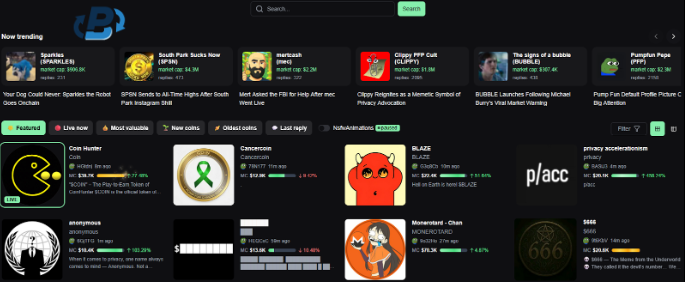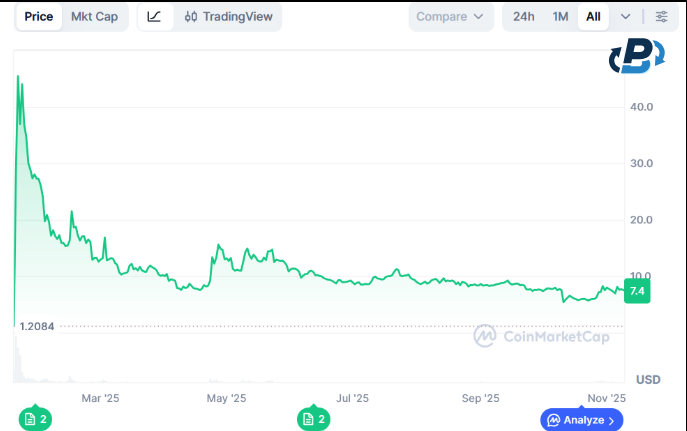The cryptocurrency ecosystem has too many projects and too little liquidity for them, which is why crypto project owners and their marketers hire influencers to attract investments. Those influencers most often promote projects by mentioning them in their posts, by posting screenshots of owning the tokens, by making a video about the project, or by filming themselves using the coins. There are no clear rules in such markets, and each influencer decides how much they will charge for promoting a project based on the number of followers, as revealed by ZachXBT, a crypto scam survivor.
If you are interested in how much each of these crypto influencers charge, or maybe you have a crypto project you want to promote and are looking for influencers to do it, you can check our crypto influencer price list, starting with the highest paid influencer @atitty_ with $60,000 per post, @eddyXBT is offering a package of 6 posts for $12,000, @mediagiraffes requests $10,000 for 2 posts, @sibeleth wants $10,000 for each X post, while @apemp5 offers to make 2 videos about a project for $8,500. The price isn’t always set per post or by the amount of followers the influencer has, and it can also depend on things like overall user engagement and the influencer’s ongoing support for the project, based on what both sides agree to in the deal.
ZachXBT Leaks a Crypto Influencer Price List
An X user known as @ZachXBT made a name for himself as a crypto scam survivor turned blockchain investigator exposing scam projects. He wanted to show that the entire crypto X community is a big scam and that the influencers are basically scamming their own followers by posting sponsored projects without revealing the sponsorship. To prove it, ZachXBT leaked a document showing the price list of notable crypto influencers on X and their Solana wallet addresses so people can check these wallets and confirm the prices. We created a table of our own and replaced the wallet addresses with the follower count for each influencer, so you can better understand how many users can be reached through each influencer, or just look for someone you are following to see whether they are paid to promote a project or not.
If you want to contact influencers to promote your crypto project, you can use the table below. We don’t get money from referrals and we are not affiliated with any of the influencers listed below:
Cargo Cult Altcoins
The biggest problem with new cryptocurrencies is that expectations around them are extremely high and patience is extremely low. It’s not enough that a specific token offers an alternative to some service or product, hence the name “altcoin,” but it has to bring a global revolution to an industry while showing the same growth in traffic, user base, and price from day one as Bitcoin is showing now. That is not just wishful thinking but straight up delusion, yet many project owners still try to become an alternative to Bitcoin or replicate Bitcoin’s success without their project offering any real utility or value while chasing quick hype and profit at the expense of their users. They hire influencers to spread the word about their project and attract investments, but Bitcoin was a result of smart people getting together and developing digital money in secret, and they intentionally hid their e-cash prototypes from the public because they didn’t want anyone sabotaging the idea and values behind it. In fact, as soon as the cypherpunk mailing list became too popular, the list was invaded by trolls and spammers that drove away all the smart people. They also built and tested their early versions as cheaply as possible to avoid attracting attention, as opposed to modern project owners wanting as much money as possible.
The mentality behind altcoins reminds me of cargo cults, which are religions by low IQ people from remote islands in the southwest Pacific on which the US established military presence in World War II. The natives saw the US military installing radio equipment, followed by airplanes landing and delivering supplies. When the military left, the natives wanted to summon the airplanes and the cargo without knowing what they’re doing, so they built replicas of radio dishes, drilled with wooden weapons, painted “USA” on their chests, and otherwise mimicked the appearance of the US military in hopes the airplanes and their cargo would appear again.

Source , there are nice images of the kind of low IQ people I’m referring to in the link
You can see that there was a great deal of thought and effort put into making a detailed mockup of a radio dish, yet it is only a mockery of the real thing that has no practical purpose except to inspire belief that cargo is about to come, which is the same logic behind an altcoin trying to mimic Bitcoin’s success. Even if an altcoin has real fundamentals and usable features, there is no guarantee the owner will manage to scale it up or that he will maintain it in the long run. There have been plenty of instances in which the project owner suddenly abandoned his altcoin while taking up all the liquidity, which is known as an “exit scam,” leaving the majority of the investors holding worthless tokens that cannot be redeemed, while the few insiders who got word of the exit scam dumped their tokens ahead of time and got out with profit.
The funniest exit scam example is Prodeum, an Ethereum-based altcoin that promised tracking individual pieces of produce with special codes so that people can see their origin country and whether they had any pesticides on them before buying them. A quick Wikipedia search shows me that Uzbekistan produced over a million tons of apples in 2022, and napkin math tells me that’s 4 billion apples to track, and that’s just one country producing one type of fruit in one year, and we haven’t even gotten into how many kinds of pesticides there are. The premise behind Prodeum is beyond retarded, and it took me 20 seconds to figure it out, yet people still put money in it until someone noticed that the Prodeum website had photos of random people as alleged team members, so the project owner exit scammed, getting away with $3,000 and replacing the website’s main page with the word “penis.” Benebit was another altcoin whose owner exit scammed, though that one involved customer loyalty tracking (?) and an exit scam with anywhere between $2.8 and $4 million.
How to recognize a real crypto KOL
If your X profile has more than 50,000 followers, and your tweets receive more than 10,000 views on average, you can likely be considered a crypto KOL, meaning that you can basically influence people’s perceptions and investing choices. Even if it sounds great, you must understand that your tweets are basically perceived as financial advice, and it brings responsibilities. KOLs must remain authentic, real, honest, and trustworthy because they can lose their relevance very quickly if they endorse scams or misleading crypto projects. In summary, being a KOL or crypto influencer is a responsibility, and KOLs influence people’s perceptions and investing choices relatively easily.
Degenerate Gambling Shitcoins
Cargo cult altcoins wouldn’t exist without low IQ investors, who have the following attributes:
- limited vocabulary
- poor impulse control
- easily impressed by superficial values
- no imagination
- inability to discuss anything abstract
- hate for reading
- inability to delay gratification
Any cryptocurrency project that attracts low IQ investors and their dumb money , even if it has sound fundamentals, is destined to turn to shit because too much money too soon destabilizes good ideas. People noticed there’s so much dumb money around that they started launching meme tokens and joke cryptos specifically designed to attract it, affectionately called “shitcoins.” There is even a website, Pump.fun, where anyone can create a shitcoin in seconds and gamble on them.

Shitcoins are designed to be literal gambling and to attract people with an incurable addiction to gambling. Scammers can pump the shitcoin’s price, spread the word about it going up through influencers, wait until people start buying in, and quickly sell it off, which is known as a “pump and dump.” Unlike an exit scam, a pump-and-dump can be done multiple times without shutting the project down, making it very easy for scammers to fleece people, sometimes the same people over and over again, and it can likely be automated too.
Gambling Addicts and Shitcoins
To attract dumb money, altcoin and shitcoin owners use all kinds of memes and keywords, and they also use crypto influencers, such as those found trending on X, who either pose as financial gurus or fellow degen gamblers with insider information. How it works is that project owners contact an influencer and pay him to promote their project, most often by showing how easy it is to put your money in, which people do, sometimes taking out a loan, putting their life savings, or throwing their last penny into it. In early 2025, a crypto trader by the name of MistaFuccYou put his last $500 into a shitcoin, lost them, and blew his brains out while livestreaming it on X. His last words were, “If I die, make me a meme coin.”

Picture of MFY or his tweet, source is the MSN link above
We discussed MistaFuccYou’s death at PlasBit when it happened and came to the conclusion that his tragic end was the consequence of him being surrounded with fake people who filled his head with lies and took advantage of him. My opinion was that his mistake was that he kept investing his money into projects that he didn’t believe in and lost it. Other PlasBit guys added that it’s important to build genuine connections with people who share our values and who want to create something lasting, and that money cannot be the primary motive in how one lives.
I added that, based on my experience with gambling and gamblers’ mentality, degenerate gamblers always make the mistake of chasing losses. They feel a lot of regret when losing money on a bad bet and feel the need to do whatever it takes to get it back, at which point they start losing control over their emotions and begin wildly gambling. The solution is for them to always have a budget and a system by which to invest that budget to avoid emotional investing.
Dave Portnoy and Hawk Tuah Girl launch their shitcoins
In February 2025, Dave Portnoy, a crypto influencer and a bro’s bro, posted a video on X mocking people who lost their money on shitcoins he promoted. “Shut the fuck up, all right, I t old you what I’m doing. I said I’m gonna buy the coins, and I’m going to fucking dump them. I’m trying to make money like every one of you motherfuckers. I put in $10,000, I made $70,000. Am I happy about it? Yeah.” For Dave, pump-and-dumps are not a big deal as long as the shitcoin doesn’t have his name on it. He leveraged his established presence in the media as the owner of a men-oriented pop culture blog to make money, but I’m sure it soured the blog for many of his followers.
In 2024, a girl went viral for advising to spit on a penis before oral sex, earning her the nickname “Hawk Tuah girl.” She launched her merchandise brand, got a million followers on Instagram, featured in podcasts, and suddenly got involved in the HAWK shitcoin, launched on the Solana blockchain, which was pumped-and-dumped. When she started taking the heat and the scammed investors started filing lawsuits, she freaked out and withdrew from public attention. Just like Dave, she built up a notoriety with young men, who are prone to taking extreme risks with their money, before promoting her shitcoin.
There is no clear guidance about what influencers can and can’t say when promoting financial products to their followers, which basically allows them to go on with their lives without getting punished unless the investors start filing lawsuits. It’s only in specific cases where the government decided to flex its muscles, like with Kim Kardashian promoting EthereumMax (EMAX) In June 2021 on Instagram, that there was a consequence. She got a $1 million fine from the SEC, which was more than her paycheck of 260K.
Trump, Melania, and Kanye join the fray
In January 2025, Donald Trump launched his $TRUMP shitcoin on the Solana blockchain and leveraged his office of the US president to promote it and pump its value, which included promising the biggest investors that they will have a dinner with him. The initial volume was 1 billion coins, 20% of which was put in the public for sale. Its price rose up to $40 per coin and dropped by 84% since then. His wife, Melania, launched her shitcoin at the same time, and it has lost 95% of its value by now.

Source , $TRUMP
In February 2025, Kanye West, a media personality known for his unhinged rants, announced the launching of his shitcoin $YZY . The rationale behind the shitcoin is that Kanye is facing banking problems because of his controversial antisemitic and pro-NSDAP attitudes, so he created a shitcoin as the official currency for his merchandise and website. It took until August 2025 that we saw $YZY, whose price is currently stable at $0.38 per coin.
Elon Reveals How X Shilling Works
One thing common to them is that they used X or, in the case of Trump, an X-like platform to promote their shitcoin. The reason is that text-based platforms make it easy to produce a lot of content that takes less effort than a video but can still go viral and generate as much engagement as a video. One easy way to reach a large X audience and amass a following is to constantly post about trending topics, known as “yapping,” and by posting whatever comes to your mind, known as “hot take.” Elon Musk is the perfect example of a yapper with hot takes. He comments on literally any trending topic, and he used the visibility he got to promote a shitcoin called Dogecoin (DOGE), pumping its price in 2021 with his posts.

source, Dogecoin
How much do crypto influencers make per post? Depending on the tier, up to $60,000
In the case of ZachXBT’s leaked list, the promoted project was Memenetic, and some X users responded to the leak by revealing the private message with the offer they got. [How much do crypto influencers make per post]? Tier 1 influencers, such as @atitty_, got $60,000 per post, Tier 2 influencers, such as @darky1k, got $2,000 per post, and Tier 3 influencers, such as @lin_dao_, got $1,500. The tier assignment depends on things like follower count and estimated impact on the project’s engagement metrics.

Xelf is a 3-year-old X account that describes itself as a gambling addict and who has nearly 27,000 followers. Though his reach is nothing special, he got an offer to make two posts for $1,500 from Memenetic, which he refused. People commenting on the offer stated that there is nothing wrong with promotion as long as it’s disclosed, though associating oneself with pump-and-dump schemes or shitcoins can ruin the poster’s reputation for good.
How much does a crypto influencer make per promotion? Tens of thousands a month
Promotions can last for months, or as in the case of Elon’s DOGE, years. Depending on the length and the project owner’s marketing budget, that can net the influencer a lot of money. [How much does a crypto influencer make per promotion?] Assuming two posts a day and each post being paid $750 in a campaign that lasts a month, the influencer would make $45,000.
However, there is no guarantee that 60 posts would generate engagement with the project. The reason is that nobody can tell who is human and who is a bot online. It’s likely there are crypto influencers who seem to have big follower counts but only a few human followers, and even those might not be active on the platform.
Who are the top 100 crypto influencers on X? Crypto big wigs
The follower counts aren’t that important, but the real-world reputation is. Crypto influencers who have an established presence in the crypto industry, especially those who have a standalone project in good standing with the community, such as a reliable crypto exchange, are likely to be among the top 100 crypto influencers on X. As of November 2025, the top 100 crypto influencers on X include Brian Armstrong, the CEO of Coinbase, Tyler and Cameron Winklevoss, the co-founders of Gemini, and Jesse Powell, the co-founder of Kraken.
Conclusion
Bitcoin kickstarted the crypto industry that’s been snowballing into an avalanche of altcoins and shitcoins. Things are only going to get worse from here on out, and I predict we’re going to see more and more shitcoins and degenerate gambling aimed at children, especially through video games. Kids who play GTA Online can already buy the in-game currency, which is basically a crypto, with real money, and gamble at the in-game Diamond Casino on actual casino games such as blackjack. As impulsive as adult gamblers are, children are ten times worse, and the spread of cryptocurrencies and their gamification is sure to cause mayhem in their lives and the lives of their families. Children are also prone to being influenced by authority figures, and again, the crypto influencer problem ties into it.
I don’t see the cryptocurrency industry regulating itself because there’s so much money going around, and I don’t see any government regulation doing much good either. I think the core problem is that cryptocurrencies can be bought and sold on a whim, which makes their price subject to manipulation and attracts dumb money and gamblers that ruin good ideas. The only solution is to create a new kind of a crypto token that isn’t easy to buy and sell and that has to be “minted” in some way, just like Bitcoin has to be mined. Only those who put effort into a crypto should own it, and I’d like to imagine we at PlasBit are working towards that








